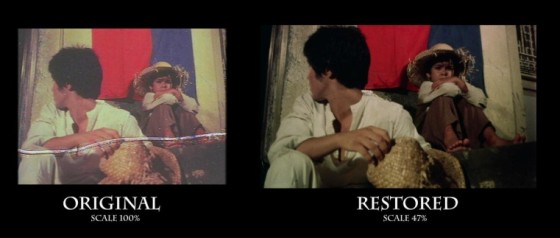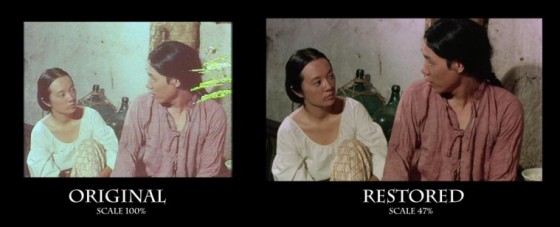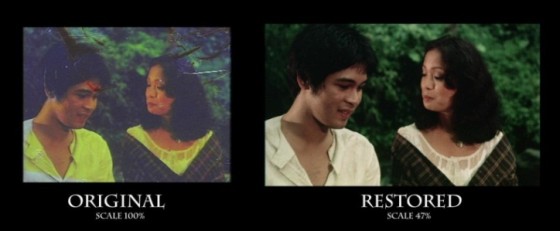Classic Filipino films restored by ABS CBN Film Archives
Restoring our Films, Saving our Heritage
Cinema is an art form that is a vital part of a nation’s culture. Beyond being a source of entertainment, films serve as cultural artifacts that help us understand our society and the prevailing ideas of the time. Its visual mode of storytelling has the power of creating a unique experience for its audience, but for people to actually experience a film even after decades, a copy preferably in the original film format has to first be accessible. Preservation, therefore, is vital since film deteriorates without proper care.
One way to preserve a film is by restoring it, hence the advocacy of the ABS-CBN Film Archives to restore and provide a showcase of classic films to new generations of Filipinos. To date, the ABS-CBN Film Archives has successfully restored, screened theatrically, and released DVDs of Himala and Oro, Plata, Mata, two classic Philippine films. It is the first in Asia to do a multiplatform campaign to promote and reintroduce a digitally re-mastered film. Just recently, the restoration of Himala has garnered the ABS-CBN Film Archives a Philippine Quill Award, placing it in a select group of professionals who set the Global standards of excellence in business communication practices. But more importantly, the restoration work has raised awareness regarding the importance of Philippine cinema and enthusiastic support in its preservation.

Screen grab of Christopher de Leon and Dranreb Belleza.
(L): original print; (R): enhanced image
Recently, the ABS-CBN Film Archives completed the restoration of Ganito Kami Noon, Paano Kayo Ngayon? (1976), an award winning film directed by the late National Artist for Film and Broadcast Arts, Eddie Romero. The film has as its backdrop the waning years of Spanish colonial rule and the beginnings of the American era in Philippine history. We follow the journey of Kulas, portrayed by a then very young Christopher de Leon, as he discovers what being a Filipino means in the midst of the brewing political and cultural revolution in Philippine society. The film won several local awards, including Best Picture, and was selected as the Philippine entry for the Best Foreign Language Film at the 49th Academy Awards. There is only one existing film print in the Philippines of Ganito Kami Noon, Paano Kayo Ngayon? which was loaned from the audiovisual archives of the Cultural Center of the Philippines (CCP) for the restoration process. The main challenges of the print were specks and scratches that were deep, vertical, and thick, requiring 2,000 hours to digitally restore the video as well as the audio impairments.

Screen grab of Tsing Tong Tsai.
(L): original print; (R): enhanced image
In line with the World Day for Audiovisual Heritage, the ABS-CBN Film Archives is launching a 360° campaign to promote the release of the restored version of Ganito Kami Noon, Paano Kayo Ngayon? since it believes that the actual restoration of a film is only a part of the process and the more crucial aspect is sharing the restored version to a new audience. Among the activities during the campaign are the release of a theatrical trailer, launch of online viral promotional videos, television commercials, theatrical screenings, and DVD distribution of the digitally re-mastered film. New generations will now get the chance to watch films that are part of our heritage while those that have already seen the films get to relive their experience and once again enjoy the masterpieces of our renowned filmmakers.

Screen grab of Christopher de Leon and Gloria Diaz.
(L): original print; (R): enhanced image
Martin Scorsese, a vanguard of film preservation, explains that we may experience the same film and the same images but in the case of a great film, the power of the timelessness of the experience is still there even when the context has completely changed. Such is the case with Ganito Kami Noon, Paano Kayo Ngayon?. At the end of the film, Kulas tells children who were at a recent battlefield: “Tandaan niyo ito, ha. Pilipino rin kayo.” (Remember this. You are Filipinos.) After 37 years, the core message of the film still resonates with Filipinos. The question of our identity as a people and how we value our own country is still relevant and it is films like these that enable the next generation to value and appreciate our heritage.


